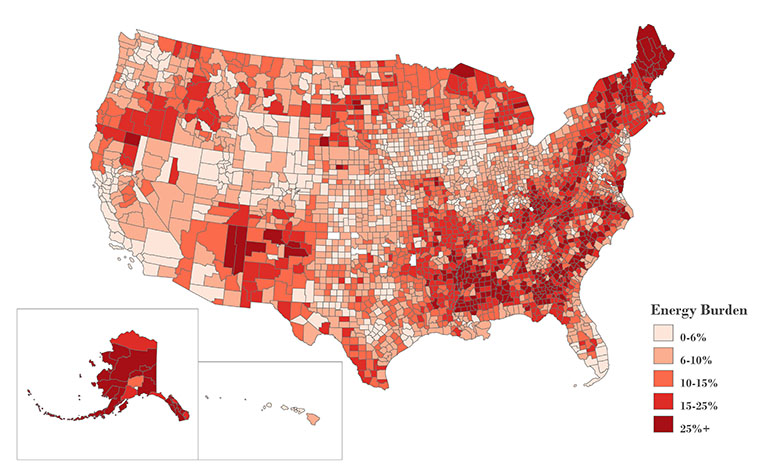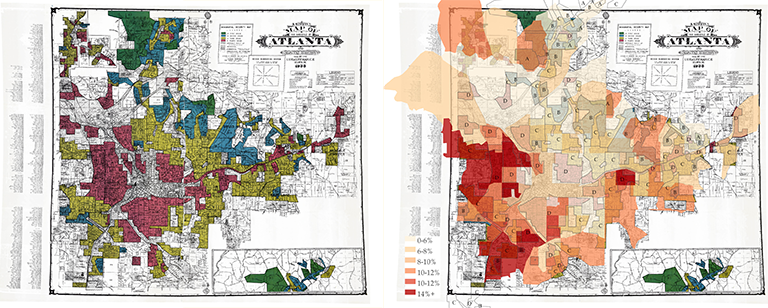Pursuing more equity in energy efficiency programs in the Southeast


SEEA’s approach to realizing a more efficient Southeast has grown in depth and reach in the eight years I’ve been with the organization. Our work increasingly spans a broad range of topics that are tied together by the aspiration for all people in the Southeast live and work in healthy and resilient buildings, utilize clean and affordable transportation, and thrive in a robust and equitable economy.
In May, we wrote about the game-changing potential of the American Jobs Plan. In addition to recasting the way we think about community, the plan includes a strong focus on providing opportunity for all Americans and to make amends for historic inequities built into the infrastructure of our country.
Last week, I had the pleasure of sharing how SEEA is thinking about its own contributions to a more equitable Southeast at the NEUAC 2021 Annual Conference. Our journey started at the tail end of our role in administering $25 million in funding from the American Recovery and Reinvestment Act in 2013 but I’m going to fast forward to last year.
Like many organizations, SEEA felt an urgency to accelerate and deepen its work on racial justice and energy equity issues in the summer of 2020. In partnership with TEPRI, SEEA published Energy Insecurity in the South which illustrates the deeply rooted connection between historic racial and economic inequities and the region’s current struggle with energy burden, and Energy Insecurity Fundamentals for the Southeast, which further defines the multiple dimensions of energy insecurity, including energy burden.
Energy insecurity is pervasive, particularly in the Southeast. More than a third of the region’s population has trouble paying their energy bills. The Southeast has the lowest electric rates in the contiguous United States, but the highest residential bills.

Housing segregation, or redlining, which led to disinvestment in communities of color, still shapes access to affordable energy in the South. Neighborhoods that were historically segregated often experience high levels of energy burden today.

So how does this relate to energy efficiency? At SEEA, we’re exploring how energy efficiency can relieve energy insecurity and provide other benefits such as improved health outcomes through better indoor environmental quality. The next step is to determine how to get energy efficiency to those who need it most.
I have sat in hundreds of hours of meetings collaborating with utilities and regulators to develop energy efficiency programs that serve the utility’s customers. In that time, I have witnessed utilities and regulators express more interest in improving energy efficiency programs for low-income customers and growth in program size and sophistication.
Through our work, we have learned that focusing on “low-income” is often a proxy for addressing equity. As SEEA confronted the reality of racial injustice, we learned about the history as well as the breadth and variety of challenges experienced by communities that have faced systemic discrimination. In Atlanta, the median energy cost burden is 32% higher for Black households and 52% higher for Hispanic households compared to white households.
Simultaneously, we learned about how to think about equity. Our understanding will continue to evolve, but for now we use the following dimensions of equity:
Procedural equity, or that all affected communities have a voice in the decision-making process;
Distributional equity, or that programs are designed to equally distribute its benefits and burdens to the entire community; and
Intergenerational equity, or programs that consider how future generations will be impacted by the decisions being made today.
We then began to think about where equity starts in the energy efficiency program development process. We focused on regulated investor-owned utilities (IOUs) because of their more mature and consistent approach. Program development begins with evaluating energy efficiency potential and setting a spending or savings target. After analysis and design, the programs are deployed, evaluated, and the cycle repeats. Many utilities periodically conduct energy efficiency potential studies to determine how much cost-effective energy efficiency is available in their service territory and for which customer classes.
In the first stage of energy efficiency program development, analyzing factors including, but not limited to, customer segmentation, housing type, language spoken in the home, and ethnicity shed light on the program’s equity. This analysis evaluates how different customers perceive and participate in energy efficiency programs, or its distributional equity. For example, rebate-based programs often exclude customers who either cannot afford upgrades or are renters who do not have control over upgrades to their homes.
We can address distributional equity through procedural equity. If representatives from the communities being served have the opportunity for their voices to be heard during program development, the program has a higher chance of reaching more customers in those communities. Finally, as the Energy Insecurity in the South StoryMap illustrates, are decision makers accounting for structural and transgenerational inequities?
During a virtual SEEA member meeting we held last year to discuss long-term innovations in energy efficiency programs, we heard emphatically that, “energy efficiency needs more teachers!” Meaning, when programs and the people that deliver those programs don’t listen to the experiences and circumstances of the people they serve, those programs will reach fewer customers. When programs are delivered by contractors who are trained to listen to the needs of the customer, establish trust, and guide them through the process, programs are much more sustainable and successful.
Lastly, what indicators do we use to measure success, and how does equity factor into that evaluation? SEEA is currently developing a data collection and stakeholder engagement plan that will shape a guide to help decision makers at commissions and utilities consider equity throughout the energy efficiency program development process and develop approaches that meet their particular needs.
Energy efficiency is an evolving set of solutions that expands alongside our individual and organizational capacity for empathy. The Southeast has the greatest opportunity for growth in energy efficiency and an opportunity to ensure that prosperity reaches everyone.
We’ll continue to keep our members informed as we make progress in this area, in the meantime, please contact Cyrus Bhedwar, director of energy efficiency policy, with any questions or feedback.

